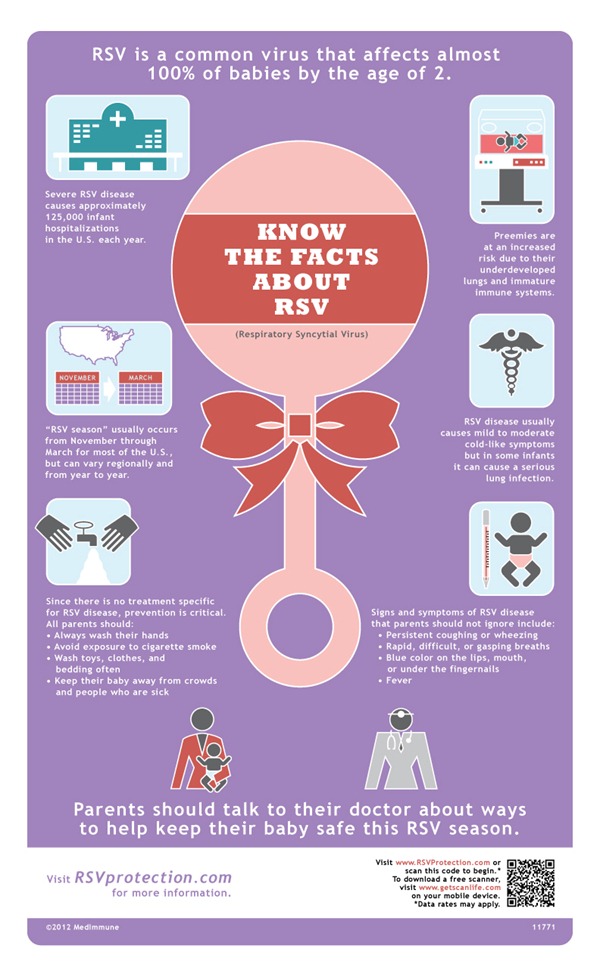Facts About RSV Disease
 Respiratory syncytial virus, also known as RSV disease, can be a be a very serious illness and mainly affects infants and small children under the age of two. This disease is highly contagious and can be transmitted by touching someone with the disease and then rubbing the mouth, nose, or eyes. It can also be contracted by coughing or sneezing and can live for several hours on surfaces like cribs or tables. RSV disease affects around 70% of all children, some seriously, and close to 100,000 infants are hospitalized each year with RSV. Around 2% of all children have a fatal case of RSV disease.
Respiratory syncytial virus, also known as RSV disease, can be a be a very serious illness and mainly affects infants and small children under the age of two. This disease is highly contagious and can be transmitted by touching someone with the disease and then rubbing the mouth, nose, or eyes. It can also be contracted by coughing or sneezing and can live for several hours on surfaces like cribs or tables. RSV disease affects around 70% of all children, some seriously, and close to 100,000 infants are hospitalized each year with RSV. Around 2% of all children have a fatal case of RSV disease.
RSV disease can be contracted throughout the year, not necessarily in just the winter months. Though, it is most common between fall and early spring. Premature babies are highly susceptible to the disease, especially in the cold months. Early symptoms of RSV are similar to the common cold and may include a runny nose, low fever, and headache. More serious symptoms of RSV can include severe cough, wheezing, decreased or difficult breathing, rapid breathing, high fever, and the bluing of the skin due to a lack of oxygen. The disease can progress rapidly, so it is vital that you take your child to a pediatrician if you suspect RSV, or if the child has these symptoms.
There are many factors that can contribute to contracting RSV disease. Male children, premature babies, twins or multiples, babies that are younger than two months, babies with pre-existing lung or heart disorders and a poor immune system are some of the leading causes. Other environmental factors that can lead to RSV disease include babies that are in daycare, have siblings currently in school, live in a household with more than four people, bottle fed babies, and babies that are exposed to second hand smoke.
There are treatments for RSV disease, and it generally takes around two weeks for a child to get over the disease. It is wise to avoid public places or schools until this disease has been treated and passed, because it is so contagious. A treatment of antibiotics, bronchial steroids, and certain medications used to treat asthma is one of the best combinations to use when trying to get rid of RSV disease. Following the instructions of the physician and making sure your child gets their prescription medications regularly are essential in trying to treat RSV. Once a child has gotten RSV, there is a high risk of contracting it again, so even if your child seems to be over it, watch them closely for signs that it is returning. Always consult your pediatrician if you have any questions and be sure to alert the doctor immediately if your child develops a high fever. One good tip to remember is that a cool mist vaporizer can help purify the air, and is one of the most effective tools you can use while trying to help treat your child's RSV disease.


Comments are closed.